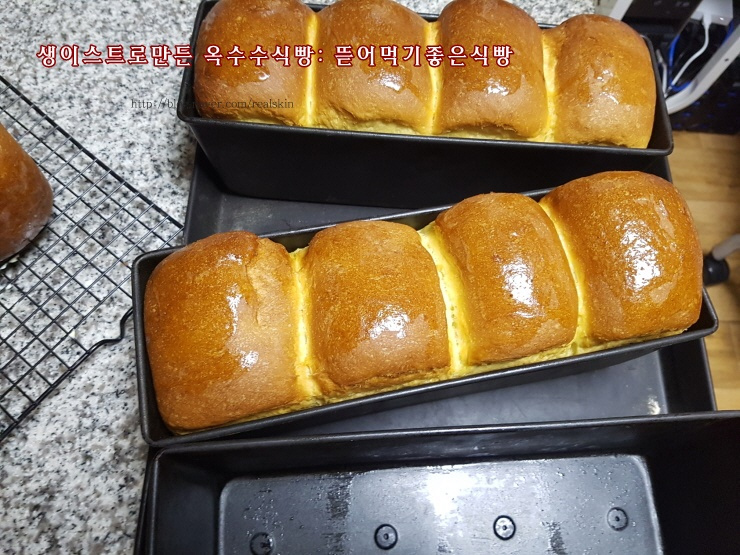
Corn bread made from raw yeast: bread that is easy to rip off
Corn bread made from raw yeast: bread that is easy to rip off
I tried making corn bread using raw yeast.
First of all, you might be curious about the difference between raw yeast and dry yeast in terms of bread taste and quality.
Raw yeast VS Dry yeast (Instant dry yeast)
Personally, I think raw yeast is much better in terms of flavor and scent.
The bread that is good to rip off is literally lumped bread or bread like mocha bread, but it is light even if you don't reprocess it or apply jam or butter, so it is delicious bread without any burden to rip it off by hand.
Personally, I think corn bread is the highest peak. Now, I'm going to use that raw yeast to make delicious corn bread.
6 serving
Within 999 minutes
써언샤인
- Ingredients
-
-
Strong flour1040g
-
corn flour260g
-
Water780g
-
East32g
-
Salt15g
-
Sugar100g
-
skimmed milk powder40g
-
Eggs1ea
-
- Cooking Steps
-
STEP 1/6How to make dough: Mix and knead ingredients so that only salt and yeast are not directly touched.
When the dough is tangled as much, add oil at the end to smooth the dough.
display one's fighting spirit. (Push, pull, push, push~)[Laughing]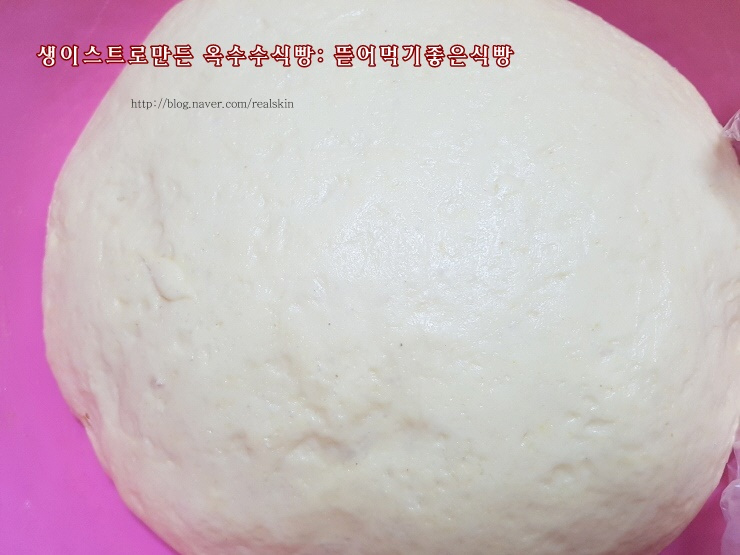 STEP 2/6First fermentation time: 60 minutes (27 degrees)
STEP 2/6First fermentation time: 60 minutes (27 degrees)
Adjust the fermentation time according to the dough condition and dough temperature with more than twice the volume.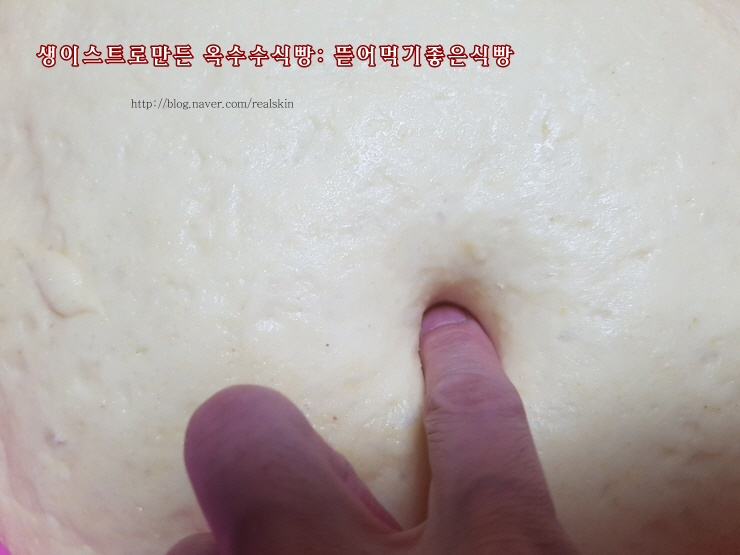 STEP 3/63) Split: 200g x 12 pieces (4 pieces), weight deviation per split dough should be small.
STEP 3/63) Split: 200g x 12 pieces (4 pieces), weight deviation per split dough should be small.
4) Rounding: Round the surface of the dough so that it is smooth.
5) Medium fermentation: 10 to 20 minutes, cover the dough with a plastic cover to prevent it from drying.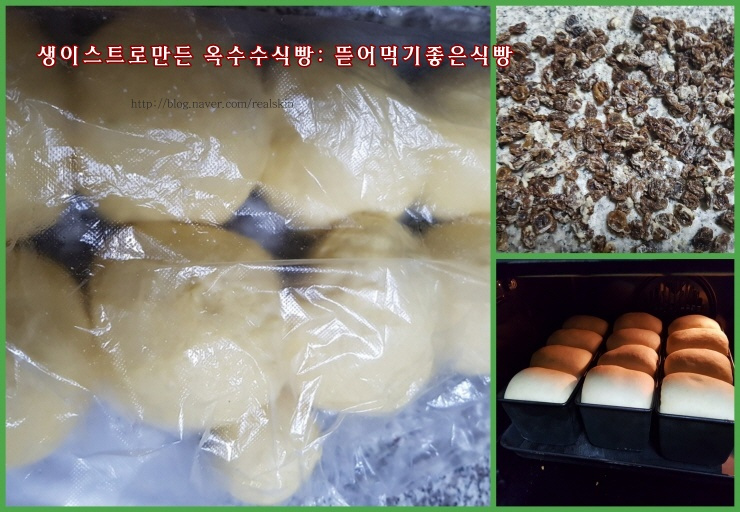 STEP 4/6formal form
STEP 4/6formal form
Remove large gases by pushing the dough to a constant thickness with a rolling pin.
Fold three layers to the center.
Roll it hard and round from one side.
Seal the joint well.STEP 5/6Fanning: Place the 4 pieces in a bread mold with the joints underneath, spaced well.
2nd fermentation: 60 minutes (40 degrees)
Degree of fermentation: Ferment until the dough is 1cm higher than the height of the pan.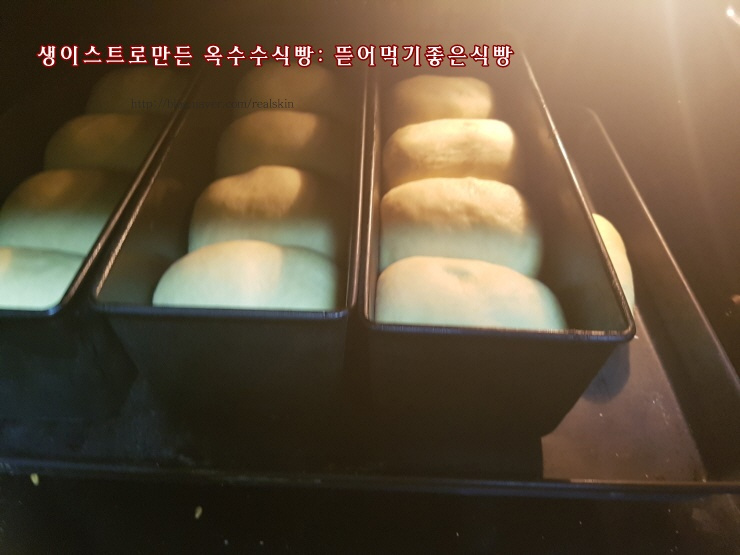 STEP 6/6Bake: 185 degrees 35 minutes
STEP 6/6Bake: 185 degrees 35 minutes
Bake enough to brown the surface of the bread so that it does not collapse.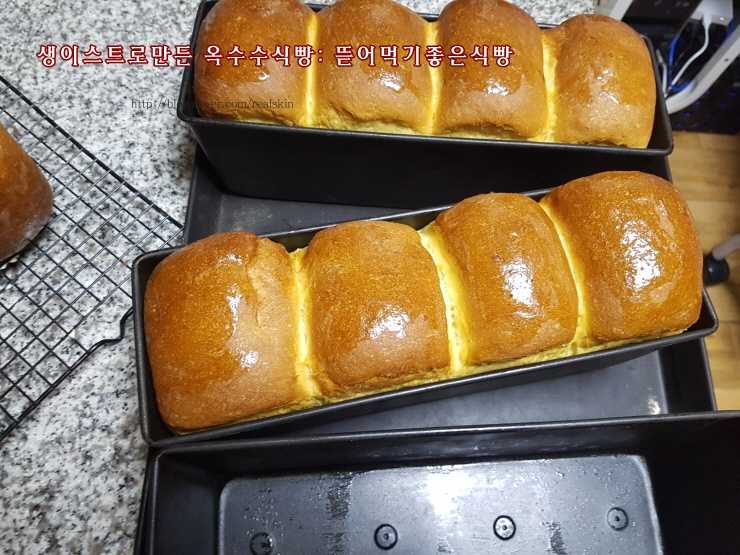 The more corn flour you use, the less gluten you have, the shorter the kneading time 1st and 2nd fermentation time: If the dough temperature is high, make it short, and if the dough temperature is low, make it long. (If the temperature is high, yeast activity increases.) Compared to the hard work of making bread without a machine at home I didn't use it very often, even though it wasn't that difficult or complicated. When you make it, you feel that the taste and flavor of the bread are different, as well as the fact that it becomes less hard later.
The more corn flour you use, the less gluten you have, the shorter the kneading time 1st and 2nd fermentation time: If the dough temperature is high, make it short, and if the dough temperature is low, make it long. (If the temperature is high, yeast activity increases.) Compared to the hard work of making bread without a machine at home I didn't use it very often, even though it wasn't that difficult or complicated. When you make it, you feel that the taste and flavor of the bread are different, as well as the fact that it becomes less hard later.
- Japchae Recommended recipe
-
-
1
 Making delicious japchae, beef japchae that doesn't get soggy5.00(14)
Making delicious japchae, beef japchae that doesn't get soggy5.00(14) -
2
 Crunchy! Spicy! Taste that you keep eating Spicy bean sprouts4.60(15)
Crunchy! Spicy! Taste that you keep eating Spicy bean sprouts4.60(15) -
3
 Bean sprout fish cake japchae4.83(36)
Bean sprout fish cake japchae4.83(36) -
4
 Making japchae so that it doesn't get soggy4.94(17)
Making japchae so that it doesn't get soggy4.94(17)
-
- chicken Recommended recipe
-
-
1
 Using Air Fryer: Making Chicken4.83(6)
Using Air Fryer: Making Chicken4.83(6) -
2
 Grilled garlic chicken. Mom's garlic chicken4.83(35)
Grilled garlic chicken. Mom's garlic chicken4.83(35) -
3
 Simple Goobne Garlic Chicken (Air Fryer)4.86(22)
Simple Goobne Garlic Chicken (Air Fryer)4.86(22) -
4
 Making kkanpung chicken with leftover chicken4.88(8)
Making kkanpung chicken with leftover chicken4.88(8)
-